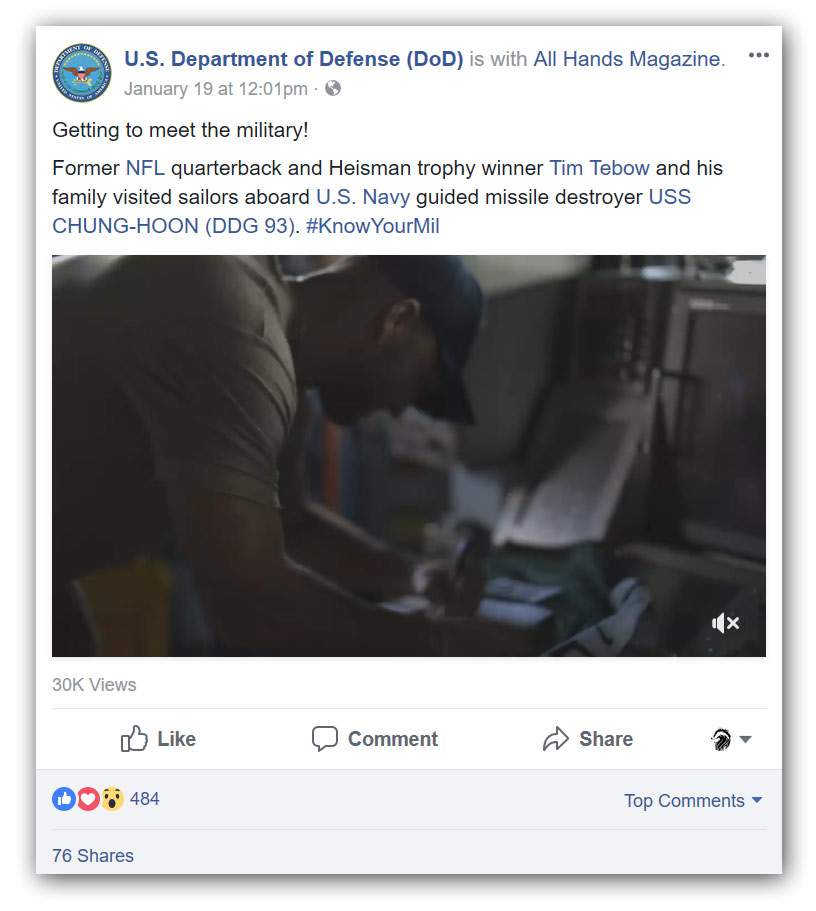Twitter, a company that specializes in carrying propaganda, advertising (propaganda), corporate marketing (propaganda) and public relations (propaganda) sent a friend of mine an email warning him that he had gotten … propaganda.
I haven’t commented much about the whole “Russia propaganda” thing because I am hyper-sensitive to propaganda in general and tend to assume that anything I see which is remotely political is (at least) positioned, spun, focus-grouped, culture-optimized and targeted. If it’s not that, it’s got product placements embedded in it, or is advertising or priming some kind of ego-gratification that can be triggered with a purchasing ad later. On Twitter, which I read occasionally, I read a very small number of posters – mostly Banksy and Shiv, and I understand that there are underlying politics at play, in both of those streams.

So Twitter sends out notification
“As part of our recent work to understand Russian-linked activities on Twitter during the 2016 U.S. presidential election, we identified and suspended a number of accounts that were potentially connected to a propaganda effort by a Russian government-linked organization known as the Internet Research Agency.”
Go back, and scrub your mind of any of those comments you may have liked.
“We are sharing this information so that you can learn more about these account and the nature of the Russian propaganda effort. You can see examples of content from these suspended accounts on our blog if you’re interested.”
The blog has stuff like this: [twitter]

That is democracy-threatening propaganda? I don’t want to see alarmist but if that can threaten democracy, then democracy probably is so weak and stupid it deserves to die.
The solution to this problem is not stupid notifications like Twitter’s, it’s to: BE MORE CYNICAL. Be more inclined to assume that politician is lying if their lips are moving. Be more likely to assume that if a product needs to advertise that it’s probably shit. Be less likely to buy a pair of sweatshop-made shoes because they appear in a movie (the soles will probably come unglued anyway) besides, they’re selling for 100 times what they cost to make.
Twitter, as a part of “big marketing” can’t say that. Twitter’s only value proposition is that they act as a pipeline (Facebook, etc, too) to directly mainline marketing felch-spit into your brain. They have a problem: now that they’ve taken a ton of money to push any old propaganda now they want to try to tell you which is the right propaganda.
Facebook, for example, has been helping to correctly tune your propaganda-feed by meeting with Israeli government officials to determine which Palestinian accounts are “incitement” [intercept] but that’s all OK because, see, Israel is not Russia.
“The Israeli government and Facebook have agreed to work together to determine how to tackle incitement on the social media network.” These meetings are taking place “as the government pushes ahead with legislative steps meant to force social networks to rein in content that Israel says incites violence.”
So, suppress one message while amplifying another; that is the essence of propaganda: [haaretz]
The Prime Minister’s Office is planning to form, in collaboration with the National Union of Israeli Students, “covert units” within Israel’s seven universities that will engage in online public diplomacy (hasbara).
The students participating in the project, who would post on social media networks such as Facebook and Twitter on Israels behalf, will be part of the public diplomacy arm of the PMO, but would not identify themselves as official government representatives.
Meanwhile, I occasionally stumble across Facebook postings that are jingoistically pro-military – they’re not an incitement to violence because it’s proper red-blooded Imperial Violence, socially sanctioned, Grade-A. It’s the best. “Hasbara” by any other name, is just as sweet.

USA! USA! [p-g]
On-field events recognizing military service members – including ceremonial first pitches, honor guards and Jumbotron tributes – have become common at professional sports venues over the past several years.
Prepared by U.S. Sens. John McCain and Jeff Flake, both Arizona Republicans, the report found that all military branches reported spending $53 million on marketing and advertising contracts with professional sports organizations between 2012 and 2015. More than $10 million of that went to the NFL, MLB, NHL, NBA and Major League Soccer.
Do you think that sportsball attendees are going to get an email explaining to them:
During the last season, we exposed you to patriotic displays that were sponsored by the US Government’s Department of Defense, as part of a subliminal recruiting program. We have posted a few links to some of the US Government’s propaganda in our blog, so that you will recognize it next time they want you to get all misted up and cheer and salute the disadvantaged lower-class who are fighting imperial wars so that you don’t have to be aware of all the violence your government is doing in your name without your approval.
Here’s some propaganda it took me seconds to find on Facebook:

Does anyone here think for a fraction of a second that Tim Tebow was not paid for that walk-on? How much did that cost the taxpayers? By the way “All Hands Magazine” sounds, you know, independent – you would have to engage your brain and do some research for a few seconds to realize that it’s US Navy published propaganda. (little letters: “Official Website of the United States Navy.”)
Next question: that posting has 76 shares – does anyone want to guess how many of those “shares” are follow-bots? Honestly, I’m too bored and disgusted to go look at some of the shares and see if they share or follow anything else. The astro-turfing companies are getting pretty good at making their followers look real, so it might be hard to tell.
Now, I’m in a quandary: is Twitter’s trying to spin themselves as anything more than a conduit for ads, LOLcats and propaganda – itself – propaganda? Oughtn’t it be obvious even to a LOLkitten that this is all a great big stream of lies?
Let us turn to the 2016 election:
The two-party system simultaneously pats itself on its back about how much money it is able to raise and spend on each election while claiming that the money really doesn’t influence the candidates’ politics at all. You are supposed to believe that because: Democracy!

Source: Washington Post [src]
The Russians spent $100,000 on Facebook ads. Without counting PACs, Trump and Clinton’s campaigns spent about $81,000,000 on Facebook.
So, here’s the new propaganda campaign: you should care about the Russian propaganda campaign.
Robert T. Morris, Sr., the NSA’s chief scientist, was at a barbecue with a small bunch of us in the early 1990s, and said something I’ll never forget: “The surprising thing about ABSCAM wasn’t that congressmen are for sale, it’s that you or I can afford one.” If the Russians really were able to influence the election so profoundly with $100,000 of ads, does that mean that if I spent my own money, I could have a significant impact on the next election? Here’s the problem with that thinking: Robert Mercer did exactly that, and so did Steve Bannon and Breitbart, and Meg Whitman and Warren Buffet and so on and so forth. They all spent lots of time and money and apparently, somehow, the only time and money that made a big difference was Russian?

Interestingly, of the 14,000 Twitter followers I bought, I still have 13,000. I had 2,000 legitimate followers before that, so give or take 10,000 of my bot-herd appear to still be “reading” my intermittent snark-droppings. [stderr] Maybe one of these days I’ll pay for the premium “commenters” on instagram and have some neural networks say nice things about everything I post. Except then I’d have to, you know, post.


Interestingly the most prominent feature to me was – for whatever reason – the Pepsi banner in the background of that sports picture. Maybe it’s because my eyes start rolling as soon as I see overt patriotism, which might just be a survival mechanism to ward off propaganda.
Instead of spending money the DoD could earn a few quid for a change by waving Pepsi banners instead. I doubt it’d negatively impact any effects on recruitment. Quite the contrary, even. I’m sure people would be more eager to sign up once they learn they can sign up to the 924815732nd PR-Brigade, get free housing, food and clothes and even money for waving literal banner ads and the likes. The civilian sector pays a lot less for that and you don’t get any of the perks or job security. The only drawback is the non-zero risk of being reassigned somewhere less comfortable…
“#KnowYourMil”
It would be more interesting to know what “my” military is doing and why but I can already picture the PR-consultant off-stage to the right frantically waving their hands. “Change topic! Change topic!”
Just have that chatbot of yours do the posting. Between themselves, your chatbot and serfbots can gradually raise your profile in the social media world until you eventually become one of those people that actually do get money from social media. Occasionally you may have to reinvest part of your earnings into more serfs. On the upside your blog/twitteraccount/whatever could generate and consume content at inhuman speeds, hopefully dragging revenues right along – at least until someone catches on.* It’s the social media equivalent of putting ten cents in the bank and freezing yourself until you’ve become a millionaire, only you can (maybe) skip the hibernation. It’s also less involved that mining bitcoins.
*Which might be never for lack of human visitors. Perhaps you could ward them off with an unsolvable captcha…
komarov @#1
Interestingly the most prominent feature to me was – for whatever reason – the Pepsi banner in the background of that sports picture.
It was exactly vice versa for me. Upon seeing that photo for the first time, I mostly noticed uniforms and flags. Then after reading komarov’s comment I scrolled up and confirmed that there was, indeed, a Pepsi advertisement. I didn’t even notice the existence of that ad before it was pointed out. My brain seems to always cut out all advertisements of consumer goods, they just turn into background noise that I don’t even notice.
I’m with Ieva Skrebele on this one – I didn’t notice the Pepsi logo at all. I generally don’t see logos; it’s just that I hate big marketing that much.
There’s a character in a William Gibson novel (I can’t remember which) who is allergic to logos and has to have all of her outfits made specially branding-free, even down to the “ykk” on the zippers. When I read that, I was surprised that it hasn’t become a fad – but then, the moderately rich parvenus seem to actually like status displays by buying logo-covered stuff by Chanel or Vuitton or whatever.
Now I have to go listen to Bill Hicks’ bit about marketing. That always cheers me up.
I recall seeing something or other on Facebook about, in response to recent Russian meddling in the presidential election, they’re going to start taking measures to reduce propaganda from Russia or something. All I could think was, “great, now my propaganda is going to be pre-approved by a single board of directors.”
https://en.wikipedia.org/wiki/Cayce_Pollard
That’s only the clowns who play moderately rich parvenus in the media for marketing / distraction purposes. Most people with actual money don’t go in for that sort of thing – displaying a logo is a pretty serious style faux pas even amongst the (real) middle classes. The Louis Vuitton range is all available without branding.
There’s a character in a William Gibson novel (I can’t remember which) who is allergic to logos and has to have all of her outfits made specially branding-free, even down to the “ykk” on the zippers. When I read that, I was surprised that it hasn’t become a fad – but then, the moderately rich parvenus seem to actually like status displays by buying logo-covered stuff by Chanel or Vuitton or whatever.
I do this too. I don’t like any visible logotypes, because 1) I refuse to be an unpaid walking advertisement for some company; 2) most logotypes are outright ugly. I don’t have any objections against non eye-catching branding, for example, I’m fine if a logotype is visible on the garment’s care and washing instructions label. I have nothing against “ykk” on zippers either, because that’s not noticeable. Usually finding clothes or bags or other stuff with no logotypes is easy.
The huge problem for me starts when finding non-branded options gets extremely hard for certain niche products. One such example would be lightweight rain jackets made from a waterproof and breathable membrane (like eVent, Polartec NeoShell, Gore-Tex etc). I have spent hours browsing Internet looking for such jacket that would have no ugly logotype on the chest, but every single manufacturer feels like putting their logotype on the product.
Camera bags are also annoying. Sure, you can buy nice looking leather or canvas shoulder bags that have no visible logotypes. The catch — try fitting a big DSLR and three lenses inside one of those. Pretty much all backpacks that are intended for carrying lots of heavy camera gear also have visible logotypes on them. Ultimately I gave up my search for logotype-free camera bag and I ended up choosing one of F-Stop Gear backpacks, but I really hate the visible logotype.